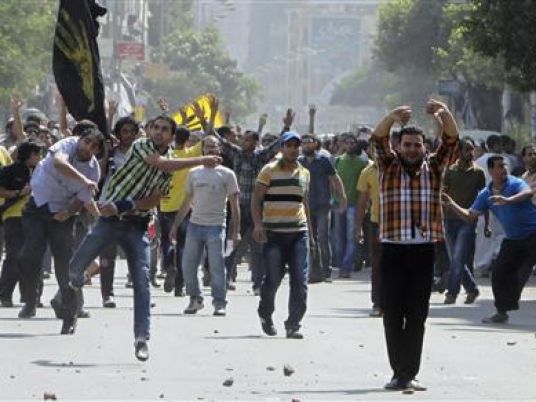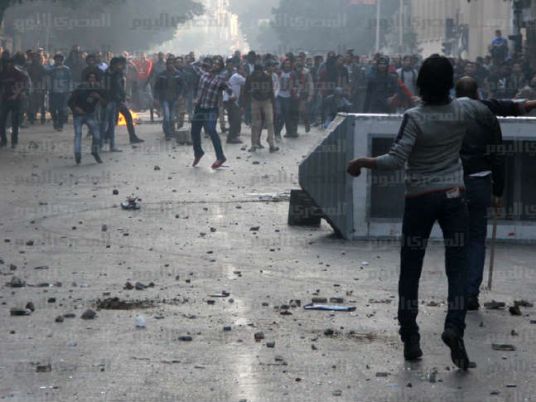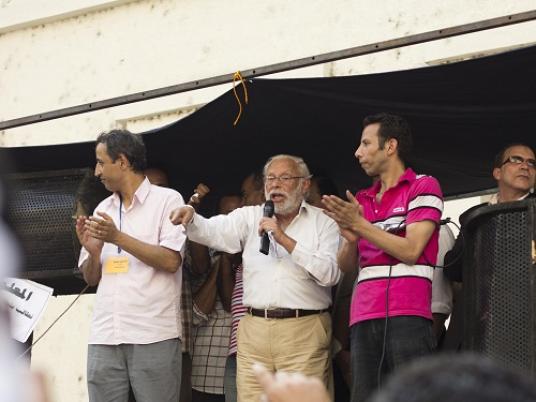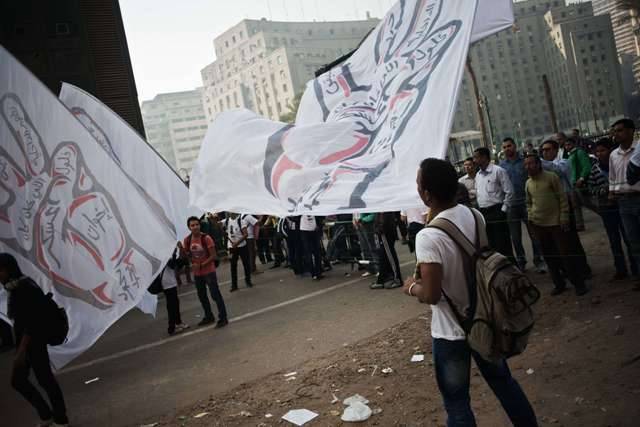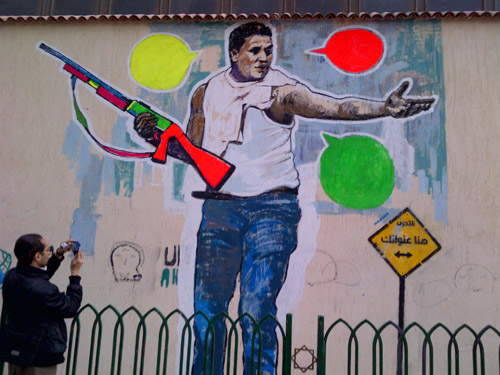
Mohamed Gad al-Rab, more commonly known as Sambo, was not a committed revolutionary. He did not participate in the 18-day uprising that ousted Hosni Mubarak nor the immediate events that followed it.
Inadvertently, he became something of an icon in events that followed later, having been caught up in the struggle between revolutionaries and the regime over the country’s future post-Mubarak. He also inadvertently became the center of the discourse over how best to respond to state violence, in kind, or by turning the other cheek.
The violence did not end after Mubarak was overthrown; it ascended toward an upward trajectory of even more bloodshed through clashes between protesters and, at times, police or army forces. The names are known: the Mohamed Mahmoud clashes (which took place at two different times), the Cabinet clashes and the Abbasseya clashes.
Eighteen months on, the turbulence of post-revolution Egypt did not abate. The first of the clashes took place on 28 and 29 June 2011. The violence was sparked by a clash between families of the revolution’s martyrs and police forces. What sparked it remains unclear to this day.
The fighting began in front of the Balloon Theater in Agouza, where the families were supposed to commemorate their deceased children in a ceremony. Instead — for some inexplicable reason — they were beaten outside the theater. They were then chased back to Tahrir Square, where the fighting continued overnight and into the next day, as more and more people joined.
One of those people was Sambo, a young ceiling carpenter from the Cairo neighborhood of Sharabiya. He had never felt the urge to attend any of the protests in Tahrir, but this time, he saw Central Security Forces officers beating the families of the martyrs on television.
“The images moved me. I had never been to Tahrir before,” he explains.
And so Sambo went to the site of the fighting. No shrinking violet, Sambo responded to the police attacks by throwing stones, and at one point managed to wrestle a pellet shotgun from a policeman — the type that police were using and would later use to great effect against protesters, blinding many.
Sambo used the gun, and later handed it to central security officers at Omar Makram Mosque. When the fighting subsided, he went back home.
He didn’t know that a reporter from Al-Dostour had filmed him. “A few days later, I was sitting in my neighborhood coffee shop and got arrested right there and then,” he says.
He was branded a thug, someone who preemptively attacked the police. In response, revolutionary forces saluted his bravery and heroism. Last September, he was sentenced in a military court to five years imprisonment for assaulting police officers and stealing the gun. He soon became one of the poster boys for civilians subjected to military trials.
He was to spend almost a year in jail, being released in August as one of the 57 civilians given presidential amnesty after being detained by the military. While in prison, his son, Gad, was born. “Prison is not a cafeteria,” he says while standing in Mohamed Mahmoud Street.
On that street, there had been a huge graffiti artwork of him carrying the gun, surrounded by balloons — depicting the savior of the martyrs’ families who had been attacked outside the Balloon Theater.
It was recently painted over by the state’s incessant need to whitewash recent history as expressed in graffiti, but, as he stands there in the street, graffiti artists have already repainted and resprayed new ones.
“The government treats prisoners like animals. I was humiliated and beaten. But it’s not just me, they treat everybody bad. They’re not human, they treat each other badly. No animal would stand this, let alone a human being,” he says.
But he adds that it was “reassuring” that groups such as the No to Military Trials Campaign were chasing his case. “It helped to know I hadn’t been forgotten,” he says.
Mona Seif, one of the founders of No to Military Trials, says Sambo’s case was different. “He had been charged with a criminal offense, but his actions had been removed from its context. At that time, the military and the Interior Ministry was using the term ‘thugs’ against the working class and those from poorer backgrounds,” she says.
In the wake of his arrest, a furor ensued over whether he was right to wrestle the gun to use it in self-defense, and whether that meant a paradigm shift in how protesters were reacting to state violence. Some said it was only fair to defend oneself from tear gas, guns and swords, while others felt that protesters should stay faithful to the chant of “selmeya,” or peaceful.
Seif feels “selmeya” is sometimes misunderstood. “This is my personal opinion but I’ve always been upset by the presentation of revolutionaries as pure and glossy and don’t resist. The understanding of selmeya is wrong; for many it means to not respond to violence and to die in silence. Rather, peaceful resistance is to not instigate violence, but to defend yourself from it.”
The argument is especially relevant in light of the many deaths and injuries in the transitional period. Those who studiously monitor events can also be mindful of which narrative they might be playing into and whether they’re creating icons, says Sherief Gaber of the Mosireen video collective, which was heavily involved in documenting the violence that followed the 18-day uprising.
“It’s something we’re aware of, and we do make a conscious decision to avoid filming known activists or figures of the revolution, and find voices that would give plurality to the revolution,” he says. “We don’t attempt to produce icons because individuals can and have been brought down. It’s about the collective strength of numbers.”
He says the collective has done videos on individuals, but attempts to connect them to the larger struggle. “You don’t want to conflate the individual with the bigger picture,” he explains. Gaber adds that “resistance is justified and legitimate. We’ve always tried to put that argument forward — that it’s not a crime to resist state violence.”
As the man at the center of the debate, Sambo tends to agree. “Are you going to look at whether I used the gun and not look at the people who were dying, who were being fired at and attacked by the police? … I saw people dying. What do you expect me to do?” he says. “Who’s going to hold the police that killed these people accountable? They’ve gotten away with it. I fired a gun and was labeled a thug, yet the regime kills Egyptians and no one holds them accountable.”
Even as a reluctant participant in part of the narrative of events, he feels cast aside, like so many from his neighborhood. “I got five years, and now I can’t find a job. Was what I did so wrong? The media chased me, but nobody else does,” he says. “Conditions are worse after the revolution. There are so many youth out of work. I can’t eat freedom.”
And that is a message he hopes the media attention surrounding him will get through to President Mohamed Morsy.
“I hope Morsy thinks of the many young people in the poor neighborhoods, the blood that has been spilled with no justice, and the many who were tried in military courts,” he says.
This piece was originally published in Egypt Independent's weekly print edition.

